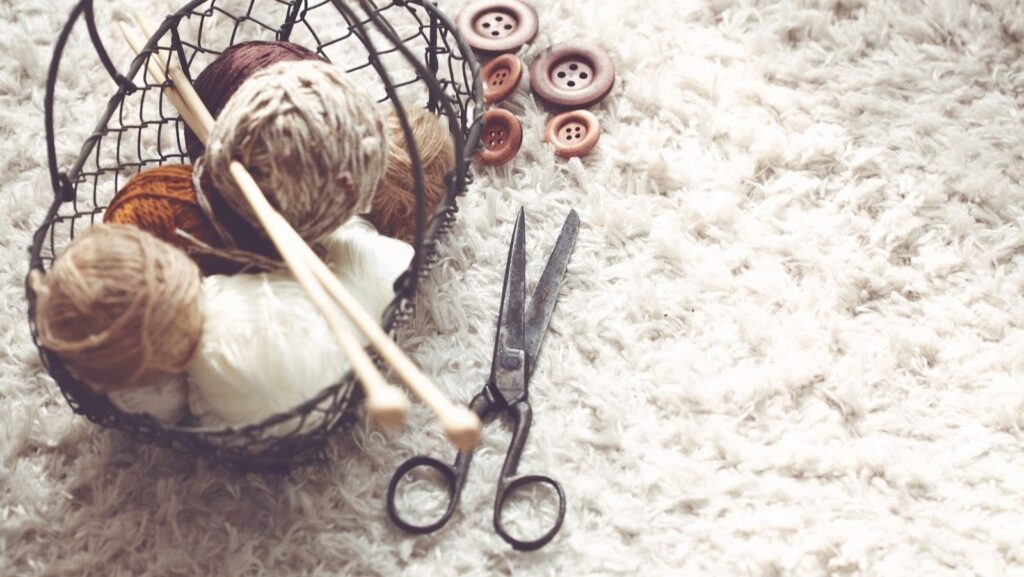Ever found yourself tangled up in the age-old debate of knitting versus crochet? It’s not just about which is easier or more fun, but often, crafters are curious about which technique consumes more yarn. As a seasoned yarn enthusiast, I’ve often pondered this question too.
In this article, we’ll unravel this mystery and delve into the world of yarn usage. Whether you’re a knitting newbie or a crochet connoisseur, you’re bound to learn something new. Let’s get ready to explore this fascinating aspect of your favorite pastime.
Understanding the Basics
In knitting, two needles are the primary tools. These needles interlock loops of yarn, creating multiple active stitches on the needle. Knitting projects can range from simple scarves to complex clothing items, such as sweaters and socks. Providing a tight finish, knitting produces consistent and even stitches.
By contrast, crochet involves just one crochet hook. With this tool, I create intricate patterns by drawing loops of yarn through other loops. Unlike knitting, crochet only has one active stitch on the hook at a time. Crochet crafts can vary from doilies to garments, contributing a comparatively looser but highly textured finish.
To understand which craft uses more yarn, it’s crucial to comprehend the primary difference between the two techniques – the density and structure of their stitches. Knit stitches tend to be tight and compact, while crochet stitches are typically larger, bulkier. As a result, crochet might use more yarn for a project of the same size, but this consumption is dependent on factors like the chosen yarn, stitch, and pattern.
For example, if I use a worsted weight yarn and the popular “single crochet” stitch, it’ll typically consume more yarn compared to using the same yarn and knitting the “stockinette stitch”.
Does Knitting or Crochet Use More Yarn
Taking the previous knowledge into account, I’ll now dig deeper to analyze yarn consumption in both knitting and crochet, particularly focusing on stitch choice and the yarn type’s role.
Stitch choice significantly influences yarn consumption. More complex stitches tend to require more yarn. In knitting, garter stitch—formed by knitting every row—uses fewer strands than purl or stocking stitch. Conversely, crochet’s typically complex stitches like Granny Squares or Shell Pattern consume more, increasing its overall yarn usage.
Yarn type also impacts usage. Thicker yarns such as chunky or super chunky use less length due to their volume, meaning you’ll see less yardage on your ball band. Thinner yarns like lace or 4-ply will offer more yardage but might require doubled strands, increasing yarn usage.
Next, I’ll consider the technique’s role in yarn usage. In crochet, creating stitches necessitates a series of loops, each taking up a bit of yarn. Knitting, with its tighter, more uniform stitches, tends to consume less for a similar-sized item. Hence, crochet generally demands more yarn—around a third more than knitting.
Yet, bear in mind, yarn consumption is only one aspect of your crafting decision. Factors like the desired texture, the project’s complexities, and personal skills and preference are equally, if not more important.
Knitting vs. Crochet: A Comparison
So, it’s clear that between knitting and crochet, the latter tends to use more yarn. This is primarily due to the looser, bulkier stitches that crochet employs. However, it’s not just about yarn consumption. Stitch complexity, yarn type, and the maker’s tightness also contribute to the yarn usage. Thicker yarns and complex stitches may require more yarn, but they also add to the texture and intricacy of the final product.
Ultimately, it’s about more than just yarn usage. While crochet might require a bit more yarn, the choice between knitting and crochet should also consider factors like the desired texture, the complexity of the project, and of course, personal preference. So, don’t let yarn consumption be the sole deciding factor. Explore both crafts and find what suits you best. After all, both knitting and crochet have their unique charm and benefits.

